
Physiology News Magazine
An update on The Journal of Physiology
Features
An update on The Journal of Physiology
Features
Stewart Sage
Chair of the Editorial Board, The Journal of Physiology
https://doi.org/10.36866/pn.49.22
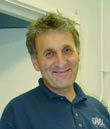
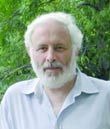
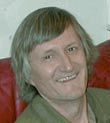
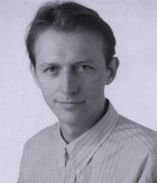
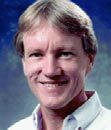
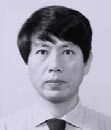
I was elected Chair of the Editorial Board of The Journal of Physiology at the start of May 2002. My association with The Journal goes back over 15 years. I published some of my PhD work in The Journal of Physiology back in 1987 and soon afterwards found myself acting as a referee, supervised as I was by the then Chairman of the Board, Tony Edwards, and one of the Distributing Editors, Tim Rink. My load as a referee increased steadily over the years and I was invited to join the Board in 1997. I became a Distributing Editor at the start of 2001. On election as Chair I was immediately dropped in at the deep end since the Society had just initiated (at the suggestion of the Board) a tendering process for the contract to publish its journals. This process is still ongoing, but we now know it will result in a change of publisher from 1st January 2004. I therefore anticipate a busy period during my tenure.
Although there are likely to be major changes ahead for The Journal, a number of new features have been added over the past year. For a start, the format of the contents (that is the font and layout) changed from January. The change of font should hopefully keep all our online users happy as the PDF files are now much easier to read. This is something which has received criticism over the last few years and was basically a result of having a special hand-drawn Journal of Physiology font. The covers have also changed (at least the spines are noticeably different) with limited sectionalisation now on the back cover, after many years of discussion by the Board. Hopefully this will make content more accessible to readers. There are four very broad sections, Molecular and genomic physiology, Cell physiology, Tissue, system and organ physiology and Integrative physiology, covering all areas of physiology.
The introduction of the new online manuscript submission system last November went remarkably smoothly. After initial difficulties getting used to the new way of working, most people are now willing to admit that it does seem to operate very well. Although some of the personal contact with staff has been lost, this has been compensated for by the reduction in delays. The mean time from submission to acceptance is now the lowest ever, at just under 2.5 months. With the introduction of Physiology in Press, the publishing of copy-edited but not corrected articles online ahead of print, the delays from acceptance to publication are down to less than 1 month. This means that, on average, a paper can be published within about 3.25 months of submission. Rapid Reports can now be published online within 2 months of submission. These times are a significant improvement, and one that The Journal is determined to maintain. Full publication statistics can be found in the Society’s Annual Report.
The Journal of Physiology Symposia have continued to be a popular feature and the series continued in 2002. The first took place in Tübingen, Germany on 15th March on ‘Normal and pathological excitation-contraction coupling in the heart’, with the second shortly afterwards on 20th March in Los Angeles, California on ‘Fetal programming: from gene to functional systems’. Plans are well advanced for a further symposium in 2003 on ‘Ion channels: their structure, function and control’ on 24th March in Fukuoka, Japan. To increase the attractiveness of the issue containing these symposium papers, The Journal also publishes associated papers, which undergo the usual reviewing process.
In January The Journal published its first ‘Classical Perspectives’ article to celebrate the 50th anniversary of the publication of the paper by Hodgkin and Huxley (117, 500-544 (1952)), which was the final paper in a series on voltage clamp experiments by Hodgkin, Huxley and Katz. This Perspectives article is accompanied online by the PDF file of the original paper. The Journal plans on having regular Classical Perspectives articles and so build up a collection of these classic papers, which hopefully will be interesting to regular readers but also a useful teaching aid for students.
Submissions to The Journal have increased in 2002 by about 7%. This increase is welcomed to ensure that The Journal continues to publish only the best papers. They continue to be handled by five Distributing Editors.
The Board has been joined this year by Michael Ferenczi, Enrico Cherubini, David Attwell, Karl Gegenfurtner, Graham Lamb and Tomoyuki Takahashi. We are also extremely grateful to Allen Cowley Jr who has kindly agreed to lead The Journal’s new initiatives in the field of functional genomics and, with assistance from John Hanrahan and Richard Moss (our Topical Reviews Editor), to put together a special issue of The Journal for publication in January 2003.
The appointment of Jill Berriman as Managing Editor, to help to ensure that The Journal maintains its status as one of the leading physiological journals, has removed some of the duties of the Press Secretary. This post is currently vacant and is likely to be discontinued in the near future. Consideration is being given to creating a replacement position of Deputy Chair, a title which would more accurately reflect the duties concerned. The Board is considering ways to encourage the involvement of overseas Editors. The appointment of an International Deputy Chair has been suggested which would hopefully achieve this and increase submissions from overseas authors.
A number of Editors retired from the Board in July – Susan Wray (who had also served as Press Secretary), Michael Barish (a Distributing Editor), Stephen Lisney (Senior Ethical Editor), Ian Forsythe, George Stephenson and Wouter Wieling. Their contributions to the continuing development of The Journal have been invaluable.
Special thanks are also due to Barry Hirst for his long and dedicated service to The Journal as a Distributing Editor, Press Secretary and latterly as Chairman.
In my role as the new Chair I feel that The Journal must adapt rapidly if it is to benefit from the opportunities offered by electronic publication and avoid associated threats. I believe that better strategies must be devised for making The Journal more attractive to authors and for addressing the concomitant need to expand our readership. These are difficult goals to achieve but the efforts of a well-motivated Board should be sufficient to carry The Journal forward and I look forward to the years ahead.
Stewart Sage
Chair of the Editorial Board
The Journal of Physiology
